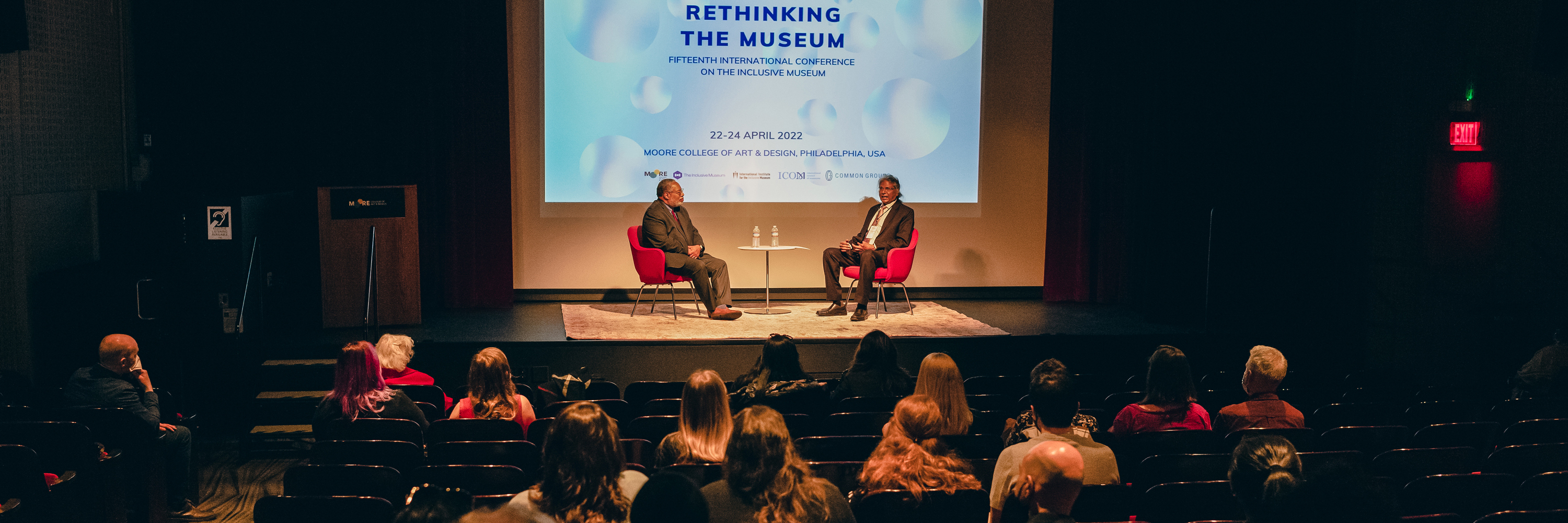Inclusive practice across visitors, engagement, and representation.
The Network investigates how museums expand access and participation while re-thinking forms of engagement and modalities of representation in a digital, diverse world.


At the core is a shift from the universal visitor to richly diverse publics whose identities are layered and intersecting. Inclusivity requires recognizing particularity while cultivating a shared space where every visitor can create meaning. This entails rebalancing agency—moving from passive audiences to active participants—and re-framing pedagogies, programs, and communications to invite belonging. Digital transformation intensifies these questions: collections born-digital, rights and reuse, discoverability, and multimodal literacies reshape how heritage is preserved, accessed, and co-interpreted. The Network advances practice grounded in professional ethics and global guidance while foregrounding the lived complexities of communities and their stories.
No longer the universal individual citizen of our recent modern aspirations, visitors of today are recognizably diverse.
The dimensions of this diversity are material (class, locale, family circumstances), corporeal (age, race, sex and sexuality, and physical and mental characteristics) and symbolic (culture, language, gender, family, affinity and persona). These are the gross demographics, the things that insist on our attention. But if we take the time to look more closely at today’s public, it is qualified by intersections and layers of identity which immediately turn the gross demographics into sometimes dangerous oversimplifications. The paradox of today’s public is that, in an era of globalization, cultures are diverging: dispositions, sensibilities, values stances, interests, orientations, affinities and networks.
So how can one speak to audiences? How does participation work? How can we create meanings which are germane?
‘Inclusivity’ names a paradoxically two sided answer. One side is to recognize particularity. What and who should be represented in the museum? What is it to be comprehensive? What is canonical or definitive? To answer these questions today, we need to move beyond the divisions of high as opposed to popular culture, the techno-scientific as opposed to the everyday, the national-modern as opposed to the ethnographic-traditional. No longer can we solve the problem of difference, of ‘us’ and ‘them’, by dividing people and their objects into separate categories and separating them in spaces unto themselves. We need to anticipate the particularities of visitors.
The other side of this answer requires us not just to catalogue of differences, to check them off from a list of potential points of dissonance. Perhaps we also need to create a new and paradoxical form of universality, the universality of inclusivity. How do we create a museum where the text is open, where every visitor is allowed the space to create their own meanings, where no visitor is left out? The answer in part is in to devise new …
What is the role today of the reader, the viewer, the audience, the citizen, the customer, the patron?
Our recent modernity was premised on relatively passive readers, viewers and audiences; relatively compliant employees and dependent citizens; and relatively appreciative customers and patrons. To take just a few touchstones of change, the new media transform readers, viewers and audiences into users, players and characters. Workers are supposed to personify the enterprise and citizens to assume responsibility for themselves. Customers are always right—for their differences, products and services have to be customized. So too, the quirks of patrons must be patronized.
The change represents an evening up of balance of agency and a blurring of roles, between the person in command and the person consenting, between producers and consumers of knowledge, and between creators and readers of culture.
In museums, more than simply ‘interaction’, visitors need to place themselves in the exhibition, to belong in the space and to join the cultural dialogue. For museums, this is the basis for a new communicative frame of reference and a new pedagogics. This will be made possible at least in part through the new …
The emerging communications environment—in which image, sound and word are all made of the same digital stuff—affords new openings for museums, and new challenges.
Not only are museums challenged to preserve heritage which is increasingly ‘born digital’. It is also the case today that there is no collectable object, no site-specific experience, which cannot be reproduced and made available to ‘visitors’ at the ends of the earth though digital means of representation.
This creates unique challenges in the realm of intellectual property. It raises new practicalities of relating to visitors who are more diverse than ever. It presents a new task for museum workers to explore the communicative affordances of the ‘mutiliteracies’ of digital representation.
In meeting these challenges, museums are destined to reflect their changing world, and also—at times provocatively, riskily—change that world. The Museum Conference, Journal, Book Imprint and News Weblog provide a forum for the discussion of these and other fundamental questions which will surely determine the changing shape and future role of museums.